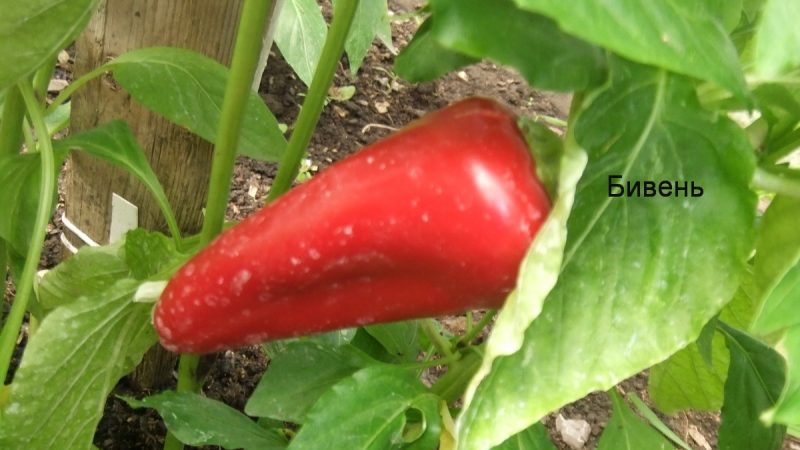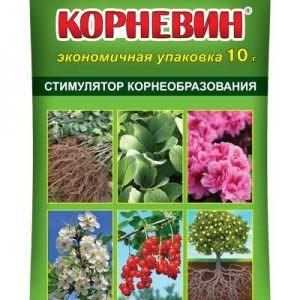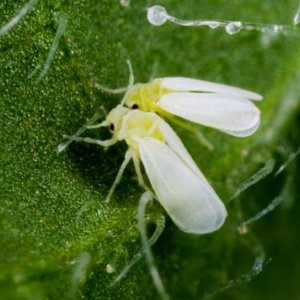Review of thick-walled and high-yielding pepper "Tiven": what kind of variety it is and how to grow it on your site
Bell pepper Tiven is grown by amateur gardeners and professional farmers. The crop is well stored, suitable for sale and long distance transportation. The variety is also appreciated for its taste - the pulp is sweet and juicy, full of vitamins and useful properties.
In the article, we will consider what the sweet pepper Tusk is and how to grow a rich harvest on your site.
The content of the article
What kind of pepper is this
The Tiven variety was bred in the 70s of the twentieth century by Russian breeders. Pepper is suitable for growing in regions with cool summers and unstable climate - in the Urals and Siberia.
Characteristics and description of the variety
The crop ripens in 90-100 days from the moment the first shoots appear. The bushes are tall, reaching 150-180 cm in height. The shoots are long, the root system is powerful. Leaves are light green, medium in size. The variety is resistant to common diseases and insect pests.
Fruit characteristics and yield
 Fruits are conical, elongated. The color is bright red, the skin is smooth and glossy. The weight of the pepper varies from 100 to 130 g. The wall thickness is 1 cm, the flesh is fleshy and juicy. The taste is sweet, not watery. From 1 sq. gardeners collect up to 4 kg of vegetables.
Fruits are conical, elongated. The color is bright red, the skin is smooth and glossy. The weight of the pepper varies from 100 to 130 g. The wall thickness is 1 cm, the flesh is fleshy and juicy. The taste is sweet, not watery. From 1 sq. gardeners collect up to 4 kg of vegetables.
Interesting! Pepper contains organic acids, beta-carotene, ascorbic acid, niacin. Regular consumption of bell pepper supports immunity, has antioxidant properties, improves health, beauty of skin, hair and nails.
Preparation for growing

Preparation for growing begins with disinfection of seeds. They are washed with warm clean water, dried and placed in a tissue bag. For disinfection, succinic acid, potassium permanganate solution or aloe juice are used.
The pouch is placed in liquid for 50 minutes, removed and the seed is laid out on a clean napkin. Disinfection is carried out and by heating in the oven - the seeds are poured onto a baking sheet and placed in the oven for half an hour at a temperature of + 180 ° C.
Important! To increase the germination of seeds after disinfection, they are germinated - placed in a damp cloth and removed to a warm place for 5-7 days. To strengthen the root system, a growth stimulator "Kornevin" is added.
The next stage of preparation is digging the beds. Pepper is a thermophilic culture; it is planted on clean and fertile lands.
Prepare the soil in two stages. The first is carried out at the end of October: the beds are cleaned of foliage and debris, shovels are dug onto the shank, manure or droppings are introduced. The second is held in March, after the snow melts. The beds are dug up again, the foliage is removed, and large frozen clods are broken.
Growing seedlings
Prepare the ground for seedlings. This can be purchased bio-soil or soil from the garden. The earth is disinfected with potassium permanganate or heating, poured into a container. Pots, boxes or cassettes are used as containers. After that, holes are made in the ground 1 cm deep at a distance of 5-7 cm from each other. 2-3 seeds are placed in each, sprinkled with earth on top and watered with warm water. The next watering is in a week.
 Caring for pepper seedlings requires maintaining a temperature of at least + 20 ° C. Otherwise, the seedlings will develop slowly, they will not have enough strength. It is recommended to store the peppers on a warm and sunny windowsill.
Caring for pepper seedlings requires maintaining a temperature of at least + 20 ° C. Otherwise, the seedlings will develop slowly, they will not have enough strength. It is recommended to store the peppers on a warm and sunny windowsill.
Two weeks after planting, the first organic feeding is organized - manure, dung, nettle infusion are used. After another 15 days, mineral fertilizers are applied: superphosphate, ash, ammonium nitrate.
Three weeks after planting, a pick is made - the seedlings are transplanted into a larger container... This is done to provide the roots with free space for development. It is recommended to be careful and attentive when picking so as not to damage the still weak and fragile roots of the pepper.
Important! Some gardeners prefer to immediately plant seeds (2 pcs.) In separate containers - pepper does not like picks. The ideal option is peat pots.
Planting pepper in open ground and further care
Seedlings are transplanted into the vegetable garden after spring frosts, around mid-May. The recommended landing pattern is 70x70. Seedlings are placed in prepared holes with water, sprinkled with soil and mulched. Mulch consists of sand, sawdust, leaves, herbs. It retains moisture and nourishes the roots.
Care is hidden from timely watering and dressing. Water the beds every five days, as the soil dries up. About 2 liters of water at room temperature are consumed per bush.
Cold watering can provoke the development of viruses and bacteria... For convenience, a drip irrigation system is installed on the site. It saves water consumption, directs moisture under the root, which helps to avoid the appearance of diseases and pests.
For good nutrition of pepper, gardeners alternate organic and mineral dressings. The plants are fertilized 10 days after planting in the ground, the interval between dressings is 15 days. They use herbal infusions, milk whey, wood ash, coal, yeast, and potassium salt. Two weeks before harvesting, watering and feeding are stopped.
Read also:
Features of cultivation and possible difficulties
It is important to regularly loosen the beds and remove weeds - bindweed, purslane, dandelions. The procedure is carried out once a week before watering. Loosening improves the quality of the soil, making it lighter and more airy. Removing weeds protects against diseases and pests, maintains a healthy microflora of the beds.
Tall bushes require a garter to support. Tie them up with gauze strips or thick wire. Wooden or metal stakes driven into the ground are used as support. If you don't tie up the pepper, the tall bushes will break under the weight of the fruit. A timely garter increases yields.
Typical diseases and pests
Despite the resistance of the Tiven variety to insect pests, with a rainy summer and improper care in the garden there are:
- Whiteflies. Small white midges appear in flocks and settle on the inside of the leaf. They suck out juices and nutrients from the plant, causing the pepper to wither and lose its elasticity. Spraying with milk whey is used as a prophylactic agent. The procedure is carried out 2-3 times per season. For treatment, treatment with Bordeaux liquid is used.

- Spider mites pierce the plant with a thin proboscis and take away nutrients from it. Around the puncture, the leaf turns yellow and dry. For the prevention of the appearance, spraying with a solution of potassium permanganate is used, for treatment - a biological product "Fitoverm".
- Colorado beetles able to destroy an entire bed of pepper. Both larvae and adults are dangerous. They eat leaves and stems and reproduce at a high rate. If there are few beetles, they are removed by hand. In case of mass appearance of a pest, a professional means "Barrier" is used.
Of the diseases, late blight is noted - a fungal disease that occurs due to high humidity and thickened planting. Brown spots appear on the plant, the fruits wither. Late blight is treated with Bordeaux liquid or copper sulfate.
Another disease is tobacco mosaic.The virus appears as a yellow pattern on the leaves. To cope with the tobacco mosaic helps "HOM" or the drug "Maxim".
Advantages and disadvantages of the variety

Of the minuses, the need for a garter is singled out; some beginners have difficulties with this procedure. Otherwise, the Tusk has no drawbacks, it is endowed with many advantages:
- high and stable yield;
- thick walls and long-term storage;
- juicy and sweet taste;
- universal application;
- resistance to diseases and pests.
Interesting! Harvested in August, when the fruits acquire a glossy red color, become firm and fragrant. Pepper Tusk is used for making salads, soups, side dishes, winter preparations. Pepper dishes are suitable for both family dinners and festive meals. They differ in vitamin composition, appetizing and colorful appearance.
Reviews
Versatile and easy to maintain, Tusk pepper is loved by gardeners throughout the country. However, there are also frustrated farmers. Let's consider different comments:
Alina, Ufa: «Tusk has been planted in the garden for the fourth year. I like the variety, it does not require much attention. I plant with seedlings, fertilize mainly with organic matter. I use the fruits to prepare winter pickled salads. "
Polina, Moscow: “I planted bell pepper Tiven in a greenhouse. A month later, I noticed brown bugs on the leaves - these were spider mites. I had to spend a lot of time and effort to destroy them. Next year I will plant a variety that is more resistant to pests. "
Mikhail, Novosibirsk: “The cold-resistant tusk is great for growing in our Siberian summer. Not sick, bushes are large, powerful. I collect 5-7 kg from each garden bed. "
Conclusion
Pepper Tusk is grown in the middle lane and in regions with short cool summers. The crop ripens in 3-3.5 months; cultivation does not require special skills. Care consists in timely watering, dressing, garters and loosening the beds.
Harvested in August, some are consumed fresh, some are used to prepare stews, salads and vegetable side dishes. For long-term storage, the crop is placed in a basement or cellar.